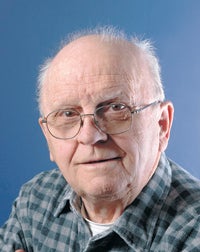The Dakota version of the Freeborn name
Published 8:36 am Friday, June 24, 2011
Column: Between the Corn Rows, by Ed Shannon
Not long ago Linda Evenson, the librarian at the Freeborn County Historical Museum, told me she had received information that there was a Freeborn Township out in the middle of North Dakota. To prove this point, she had a page from a history of Eddy County, N.D., based on a township with a rather close association with this area.
The historical connection is explained with, “Freeborn Township got its name from Freeborn County, Minnesota, from where some of the early pioneers came. Three of these families were the Ole Golsons, John J. Andersons and the Thor Hollum families. They came to south Freeborn Township and homesteaded in 1881, 1882 and 1883. The township was organized officially on June 8, 1909.
Those three families could have come from Albert Lea or elsewhere in the county or from the township or then new community named Freeborn. Anyway, their move to what was the Dakota Territory helps to verify the fact that immigrants a century ago or more had a tendency to move farther west for various reasons.
Now let’s get back to the historical narrative.
“Freeborn Township is divided by the Sheyenne River. At first the pioneers crossed the river on rocks at a shallow place east of the present bridge. This crossing was called the Rude Crossing. Helge Rude … was a charter member of Sigdal Lutheran Church which began in 1882. …
“Most of the north part of Freeborn Township is included in the Devils Lake Sioux Indian Reservation. Because of this fact, it was not opened for settlement until 1904 or 1905. The town of Hamar was started in 1905. … The first building was a post office and grocery store built by Erland Christopherson, who was the first postmaster. Hamar was named after Hamar, Hedemark, Norway, from where Christopherson had come. The railroad came through Hamar in 1906 …”
The town of Hamar is located on what the state map shows is reservation land. It almost faded away in the mid-1930s. According to a Google reference site, about all that’s left in Hamar is a grain elevator. Also, the railroad doesn’t run through this area any more.
Freeborn Township is about the same size as the one in our county and located in the northeast corner of Eddy County. This county with a size of 658 square miles and 19 townships is the smallest one in North Dakota.
Just to emphasize just how sparse the rural population is in North Dakota, there are only four towns in Eddy County shown on the state map. They are: Hamar, Sheyenne, Brantford and the county seat of New Rockford. The county’s 2000 census population is 2,385 and 1,372 of those folks are in New Rockford. By the way, only 76 people reportedly live in Freeborn Township.
Now, if I can do a slight digression, here’s a commentary about how “old” and “new” are used for the names of communities. To stress this theme, New Rockford, N.D., is obviously named for an older community somewhere else. In this situation this other place could have been Rockford, Iowa, down in Floyd County. Then again, its more likely the honor goes to Rockford, Ill. Anyway, neither of those localities is ever referred to as “old” Rockford.
Cornstalk comment
Can anyone provide any information about a group of people from the Myrtle area who also moved west?
Several families reportedly went by railroad in the 1920s to Fort Benton, Mont. Their attempts to establish new homestead farms and start a Czech (Bohemian) community just didn’t work out. Some of these folks came back to Myrtle a few years later. Any information would be appreciated and hopefully can be used for a future column or article.
Ed Shannon’s column has been appearing in the Tribune every Friday since December 1984.


